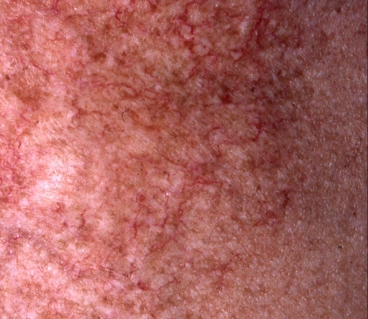How to prevent and soothe radiodermatitis after radiotherapy?

Radiodermatitis is a frequent side effect of radiotherapy in cancer patients. It is similar to a skin burn, like sunburn, and corresponds to an inflammatory reaction of the skin. Its appearance depends on the irradiation technique used, the dose of radiation received and the area treated. The peak of the cutaneous reaction may occur between 7 and 10 days after the end of the radiotherapy sessions, and may last for several months. Specific treatments for sensitive and irritated skin can help prevent radiodermatitis, limit its severity and relieve it when it does occur.
Simple everyday gestures
Adopt gentle hygiene
Why?
During radiotherapy treatment, the skin is weakened by the rays. Gentle, appropriate hygiene is essential to avoid exacerbating the side effects of radiotherapy.
How?
Prefer lukewarm showers (32-34°C) to hot baths to avoid drying out the skin.
- Limit the use of soaps, which are drying and irritating. Instead, use soap-free, fragrance-free dermatological gels, oils or lotions with a physiological pH.
- Pat skin dry with a soft towel, especially on sensitive areas, to avoid further irritation.
Moisturize skin before, during and after treatment
Why?
Well-moisturized skin is more resistant to the undesirable effects of rays.
How?
Apply a daily moisturizer to the treated area. Choose fragrance- and preservative-free products designed for sensitive, fragile skin.
Important: on the day of the radiotherapy session, the cream should be applied after the session, not before (the skin must be clean and dry at the time of irradiation).
The application of a compress soaked in soothing thermal spring water can complete the daily moisturizing of the skin.
Repair irritated skin
Why?
When radiodermatitis appears (redness, burning sensations, itching, pain), the application of a repairing care product helps to soothe and purify the skin.
How?
If the lesion is dry, apply a protective repair cream to the irritated area several times a day.
If the lesion is weeping (which is common in folds), it's best to apply a repairing spray. It should be applied twice a day.
Protecting skin from the sun
Why?
During radiotherapy and in the months that follow, it is essential to protect the irradiated area of skin from the sun and UV rays, as the skin is already weakened by the rays.
How?
Wear protective clothing. When exposure can't be avoided, apply a sun cream with a high photoprotection factor (SPF50+) suitable for sensitive skin. Don't forget to reapply regularly.
It is also advisable to avoid heat sources such as saunas and steam rooms, as well as sources of friction (tight-fitting clothing, underwired bras, etc.) or irritation (deodorant, perfume, hair removal, etc.) on the treated body area.
Related products
Doctor's stamp
Want to read on?
This access is reserved for professionals, registered on Pierre Fabre For Med.
To access the full content, please register or log in if you already have an account.